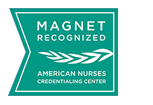Document Type
Article
Publication Date
2-12-2024
Identifier
DOI: 10.1186/s13073-024-01297-5; PMCID: PMC10860258
Abstract
BACKGROUND: Children with relapsed central nervous system (CNS tumors), neuroblastoma, sarcomas, and other rare solid tumors face poor outcomes. This prospective clinical trial examined the feasibility of combining genomic and transcriptomic profiling of tumor samples with a molecular tumor board (MTB) approach to make real‑time treatment decisions for children with relapsed/refractory solid tumors.
METHODS: Subjects were divided into three strata: stratum 1-relapsed/refractory neuroblastoma; stratum 2-relapsed/refractory CNS tumors; and stratum 3-relapsed/refractory rare solid tumors. Tumor samples were sent for tumor/normal whole-exome (WES) and tumor whole-transcriptome (WTS) sequencing, and the genomic data were used in a multi-institutional MTB to make real‑time treatment decisions. The MTB recommended plan allowed for a combination of up to 4 agents. Feasibility was measured by time to completion of genomic sequencing, MTB review and initiation of treatment. Response was assessed after every two cycles using Response Evaluation Criteria in Solid Tumors (RECIST). Patient clinical benefit was calculated by the sum of the CR, PR, SD, and NED subjects divided by the sum of complete response (CR), partial response (PR), stable disease (SD), no evidence of disease (NED), and progressive disease (PD) subjects. Grade 3 and higher related and unexpected adverse events (AEs) were tabulated for safety evaluation.
RESULTS: A total of 186 eligible patients were enrolled with 144 evaluable for safety and 124 evaluable for response. The average number of days from biopsy to initiation of the MTB-recommended combination therapy was 38 days. Patient benefit was exhibited in 65% of all subjects, 67% of neuroblastoma subjects, 73% of CNS tumor subjects, and 60% of rare tumor subjects. There was little associated toxicity above that expected for the MGT drugs used during this trial, suggestive of the safety of utilizing this method of selecting combination targeted therapy.
CONCLUSIONS: This trial demonstrated the feasibility, safety, and efficacy of a comprehensive sequencing model to guide personalized therapy for patients with any relapsed/refractory solid malignancy. Personalized therapy was well tolerated, and the clinical benefit rate of 65% in these heavily pretreated populations suggests that this treatment strategy could be an effective option for relapsed and refractory pediatric cancers.
TRIAL REGISTRATION: ClinicalTrials.gov, NCT02162732. Prospectively registered on June 11, 2014.
Journal Title
Genome Med
Volume
16
Issue
1
First Page
28
Last Page
28
MeSH Keywords
Child; Humans; Neuroblastoma; Antineoplastic Combined Chemotherapy Protocols; Neoplasm Recurrence, Local
PubMed ID
38347552
Keywords
CNS tumors; Genomic sequencing; Molecular-guided therapy; Neuroblastoma; Orphan diseases; Pediatric oncology; Rare tumors
Recommended Citation
Sholler GLS, Bergendahl G, Lewis EC, et al. Molecular-guided therapy for the treatment of patients with relapsed and refractory childhood cancers: a Beat Childhood Cancer Research Consortium trial. Genome Med. 2024;16(1):28. Published 2024 Feb 12. doi:10.1186/s13073-024-01297-5




Comments
This article is licensed under a Creative Commons Attribution 4.0 International License, which permits use, sharing, adaptation, distribution and reproduction in any medium or format, as long as you give appropriate credit to the original author(s) and the source, provide a link to the Creative Commons licence, and indicate if changes were made. The images or other third party material in this article are included in the article's Creative Commons licence, unless indicated otherwise in a credit line to the material. If material is not included in the article's Creative Commons licence and your intended use is not permitted by statutory regulation or exceeds the permitted use, you will need to obtain permission directly from the copyright holder. To view a copy of this licence, visit http://creativecommons.org/licenses/by/4.0/. The Creative Commons Public Domain Dedication waiver (http://creativecommons.org/publicdomain/zero/1.0/) applies to the data made available in this article, unless otherwise stated in a credit line to the data.
Publisher's Link:
https://genomemedicine.biomedcentral.com/articles/10.1186/s13073-024-01297-5